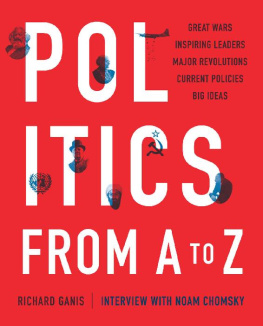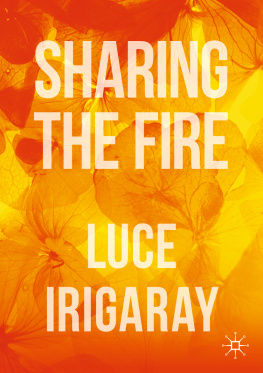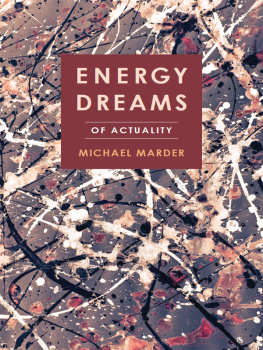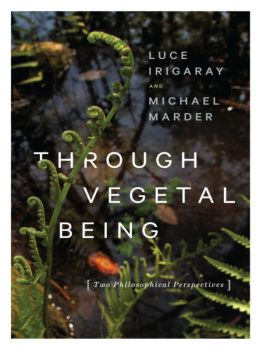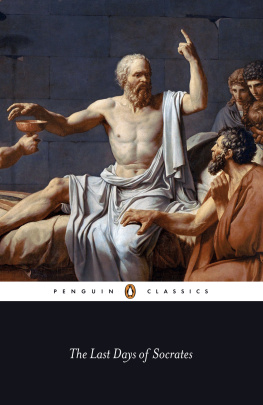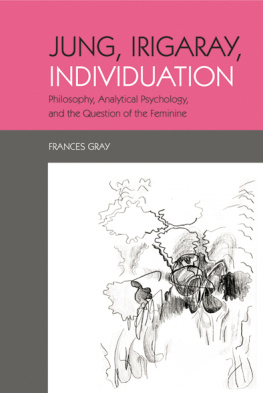Thinking Life with Luce Irigaray
SUNY series in Gender Theory
Tina Chanter, editor
Thinking Life with Luce Irigaray
Language, Origin, Art, Love
Edited by
Gail M. Schwab
Cover art: Elemental Congruence by Marcie Van Auken
Published by State University of New York Press, Albany
2020 State University of New York
All rights reserved
Printed in the United States of America
No part of this book may be used or reproduced in any manner whatsoever without written permission. No part of this book may be stored in a retrieval system or transmitted in any form or by any means including electronic, electrostatic, magnetic tape, mechanical, photocopying, recording, or otherwise without the prior permission in writing of the publisher.
For information, contact State University of New York Press, Albany, NY
www.sunypress.edu
Library of Congress Cataloging-in-Publication Data
Names: Schwab, Gail M., editor.
Title: Thinking life with Luce Irigaray : language, origin, art, love / edited by Gail M. Schwab.
Description: Albany : State University of New York, 2020. | Series: SUNY series in gender theory | Includes bibliographical references and index.
Identifiers: LCCN 2019014127 | ISBN 9781438477817 (hardcover : alk. paper) | ISBN 9781438477831 (ebook)
Subjects: LCSH: Irigaray, Luce.
Classification: LCC B2430.I74 T548 2020 | DDC 194dc23
LC record available at https://lccn.loc.gov/2019014127
10 9 8 7 6 5 4 3 2 1
With immense gratitude to Neil, who even attended the conferences, and to Julien, Allison, and Wolfie
Contents
Gail M. Schwab
Luce Irigaray
Cheryl Lynch-Lawler
Kristin Sampson
Rebecca Hill
Erla Karlsdottir and Sigridur Thorgeirsdottir
Ellen Mortensen
Fanny Sderbck
Louise Burchill
Gail M. Schwab
Phyllis H. Kaminski
Emily A. Holmes
Alison Stone
Eva Maria Korsisaari
Anne van Leeuwen
Tomoka Toraiwa
Karen Schiler
Peg Rawes
Britt-Marie Schiller
Caroline Godart
Acknowledgments
First and foremost, on behalf of all contributors to this volume, I wish to thank Luce Irigaray for the beauty and the amplitude of her work. She has been, and continues to be, a daring and inspiring philosophical, political, and spiritual leader for those who desire change in the world.
Thinking Life was the title of the Luce Irigaray Circle conference held at the University of Bergen, in Bergen, Norway, in June of 2013, directed by Professor Ellen Mortensen of the University of Bergen. Many of the chapters in this volume were presented initially at the Thinking Life conference, and I, along with the Luce Irigaray Circle, am grateful to Ellen and her team at Bergen for a great conference. I am also grateful to Ellen for her initial work on the volume, work that allowed me to complete the editing.
Many thanks to the Luce Irigaray Circle, a labor of love that has borne fruit. I would also like to thank Tina Chanter, editor of the SUNY Series in Gender Theory, whose ongoing support for the Irigaray Circle has been invaluable.
The Luce Irigaray Circle extends its thanks to Hofstra University for funding Luce Irigarays contribution and to Stony Brook University and Mary C. Rawlinson for their generous support over the years.
I wish to express my gratitude and appreciation for the generosity of Marcie Van Auken, senior graphic designer at Columbia University, who created the cover image, Elemental Congruence I (2019).
Peg Rawes and I thank Bloomsbury Publishing Plc. for permission to reprint in Peg Rawess Building Sexuate Architectures of Sustainability a short extract from Biopolitical Ecological Poetics, chapter 1 of Poetic Biopolitics: Practices of Relation in Architecture and the Arts , Peg Rawes, Timothy Mathews, and Stephen Loo, eds. London: I.B. Tauris, an imprint of Bloomsbury Publishing Plc., 2016.
PART I
THINKING LIFE WITH LUCE IRIGARAY
Introduction
Thinking Life with Luce Irigaray: Language, Origin, Art, Love
GAIL M. SCHWAB
In the first chapter of Between East and West: From Singularity to Community (2002), in a critique of what she considers Schopenhauers (mis)reading and (mis)representation of Indian philosophy and spirituality, Irigaray writes that philosophy is a matter of death, and she goes on to quote Schopenhauer: Death is the real inspiring genius or Musagetes of philosophy, and for this reason Socrates defined philosophy as thanatou mlt (preparation for death; Plato, Phaedo , 81a). Indeed, without death there would hardly have been any philosophizing (Schopenhauer, The World as Will and Representation cited in Between East and West 23). Irigaray further notes: A philosopher living and thinking life is a priori suspect in our philosophical culture (ibid.). Nevertheless, she will forcefully declare in the introduction to Between East and West : I love life, and I have searched for solutions in order to defend it, to cultivate it (4), and ask: How to go against the current? To stop the exploitation, in particular through a simple inventory, of the human and of his or her environment? How to return to where death has taken place because of the cessation of becoming, mistaking what we are? How to renew a cultivation of life, and recover our energy, the path of our growth? (viii). Many thinkers and theorists are currently pursuing answers to these questions.
The contributors to Thinking Life with Luce Irigaray , the latest in a series of volumes resulting from ten conferences of the Luce Irigaray Circle, which took place between 2006 and 2019, attempt to address these questions and to think life through the multifarious strands of Irigarays philosophy, including, of course, the foundational strand of sexuate difference, and to show how the possibility of life in sexuate difference, far from freezing up into a rigidly codified binary of two sexes, might blossom rather into a living continuum of ever-evolving change(s) and difference(s) in language, culture, art, spirit, nature, human relations, and politics. The philosophy of Man, of the Universal and the One, as Schopenhauer understood (without understanding), is rooted, grounded, in death. However, as Mary C. Rawlinson, feminist philosopher of life and Irigaray Circle co-founder, has written in her 2016 book, Just Life: Bioethics and the Future of Sexual Difference , Man has had his day (13). It is time to move on, to try something differentto try difference. Life is never One, as Irigaray frequently reminds us; in fact, life is always at least two, and always generating the diverse and the multiple. The chapters that follow Irigarays both explore and illustrate what it might mean to think life in all of the above-mentioned domains, and in others besides.
Origin, Maternity, and Relationality
Part 1: creating a living relation between them. This has been a particularly rich area of exploration in Irigaray scholarship, as we shall see in many of the chapters that follow, which include a piece by Rebecca Hill, whose book on the interval has been highly influential (see Hill 2012).
Relationality could be said to constitute the main thrust of works like The Ethics of Sexual Difference (1993), To Be Two (2001), I Love to You (1996), Sharing the World (2008), and Teaching (2008). More specifically in the area of ethical relations, How Could We Achieve Womens Liberation? has some interesting things to say about desire and sexualityideas that look back to, and substantially develop, Irigarays call for the cultivation of desire in, for example, Spiritual Tasks for Our Age in Key Writings (2004, 17185), where she emphasized the connection between sexuality and spirituality; in How Could We Achieve Womens Liberation?, she underlines the link between sexuality and freedom:




